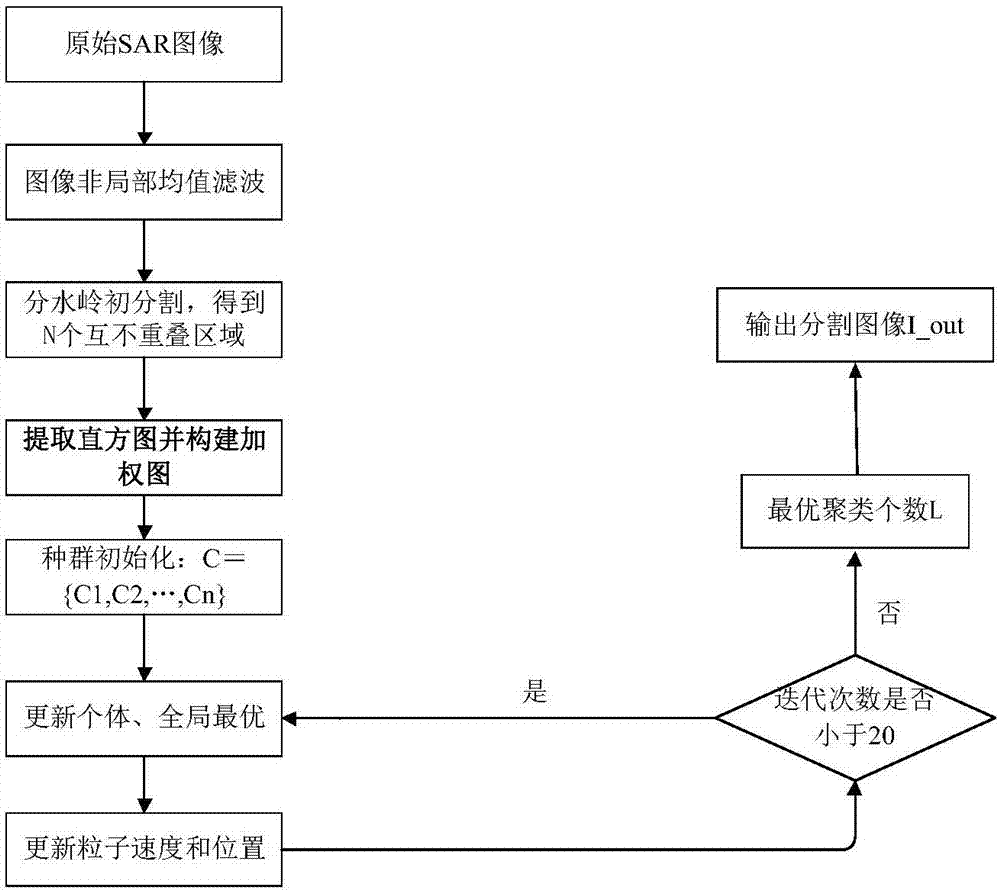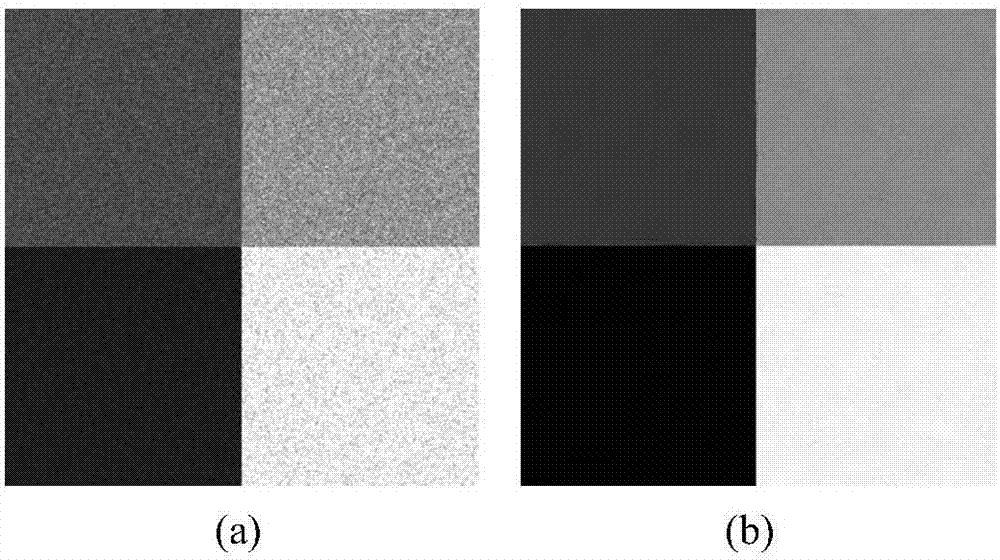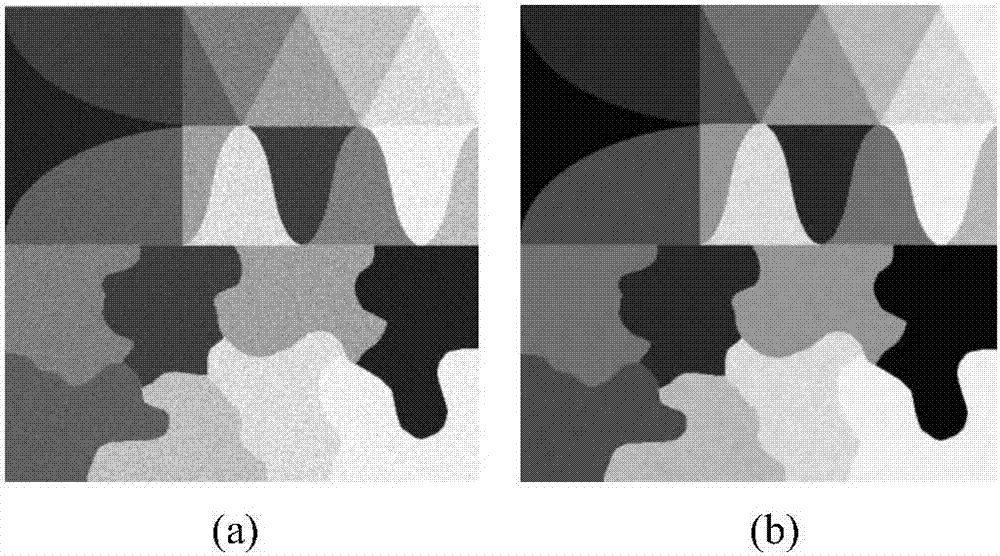Automatic SAR image segmentation method based on graph division particle swarm optimization
A particle swarm optimization and automatic segmentation technology, applied in the field of image processing, can solve problems such as speckle noise sensitivity, unsatisfactory segmentation results, and difficulty in image interpretation, achieving strong robustness, reducing complexity, and optimizing the number of convergence categories. Effect
- Summary
- Abstract
- Description
- Claims
- Application Information
AI Technical Summary
Problems solved by technology
Method used
Image
Examples
Embodiment Construction
[0032] Implementation and effect of the present invention are described in further detail below in conjunction with accompanying drawing:
[0033] refer to figure 1 , the implementation steps of the present invention are as follows:
[0034] Step 1. Input the original image I to be segmented, and read the gray gradient information of the image.
[0035] Step 2. Select the optimal value according to the experiment, including the neighborhood window radius d s , search window radius D s and Gaussian smoothing parameter h, and perform non-local mean filtering to denoise the image I to be segmented to obtain a gradient image.
[0036] The specific implementation of this step is as follows:
[0037] 2a) In this example, the neighborhood window radius is set but not limited to d s =2, search window radius D s = 5;
[0038] 2b) The smoothing parameter of the Gaussian function in this example is taken but not limited to h=10, which controls the attenuation degree of the exponen...
PUM
 Login to View More
Login to View More Abstract
Description
Claims
Application Information
 Login to View More
Login to View More - R&D
- Intellectual Property
- Life Sciences
- Materials
- Tech Scout
- Unparalleled Data Quality
- Higher Quality Content
- 60% Fewer Hallucinations
Browse by: Latest US Patents, China's latest patents, Technical Efficacy Thesaurus, Application Domain, Technology Topic, Popular Technical Reports.
© 2025 PatSnap. All rights reserved.Legal|Privacy policy|Modern Slavery Act Transparency Statement|Sitemap|About US| Contact US: help@patsnap.com



